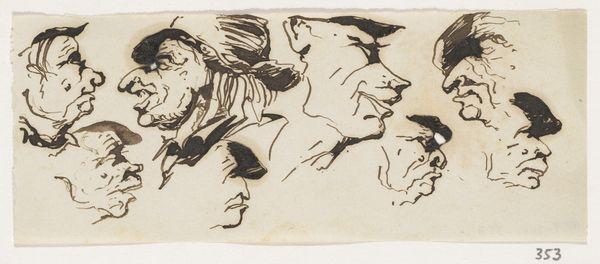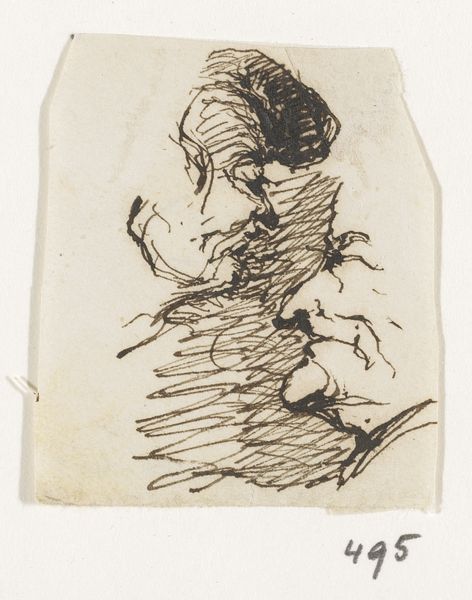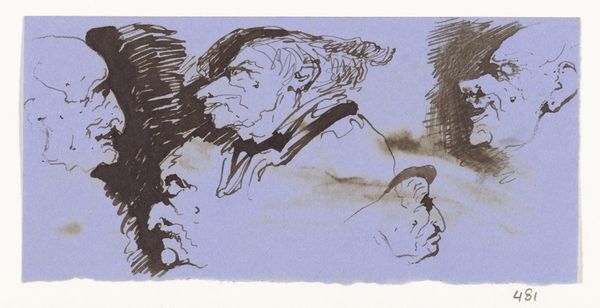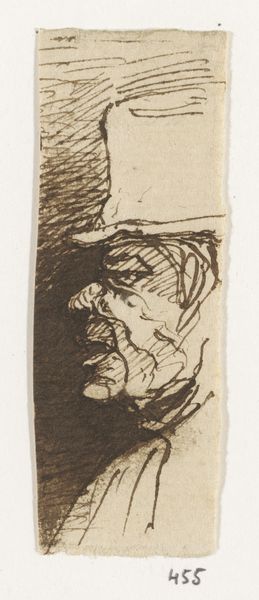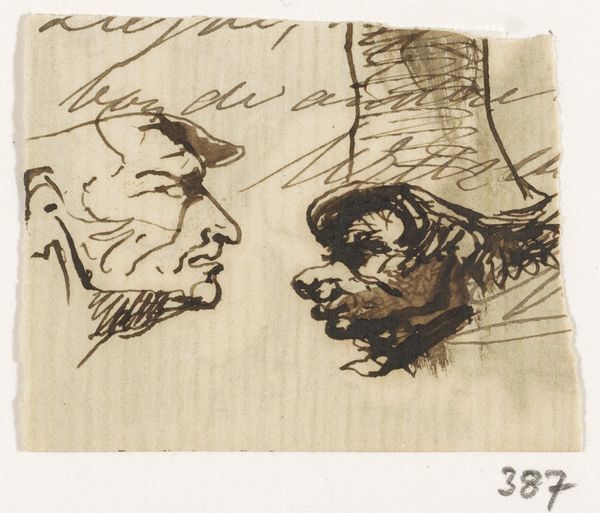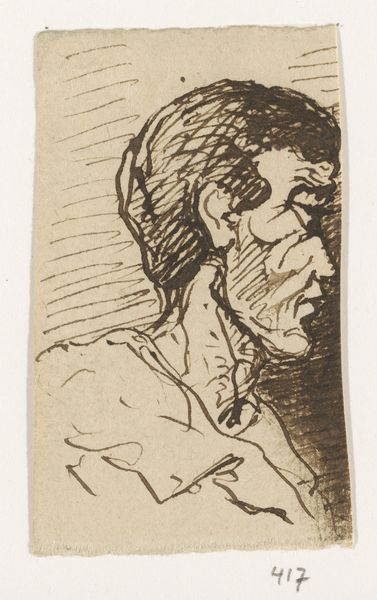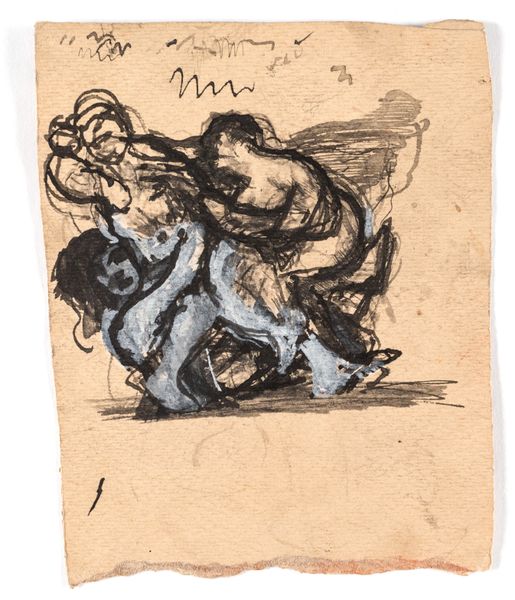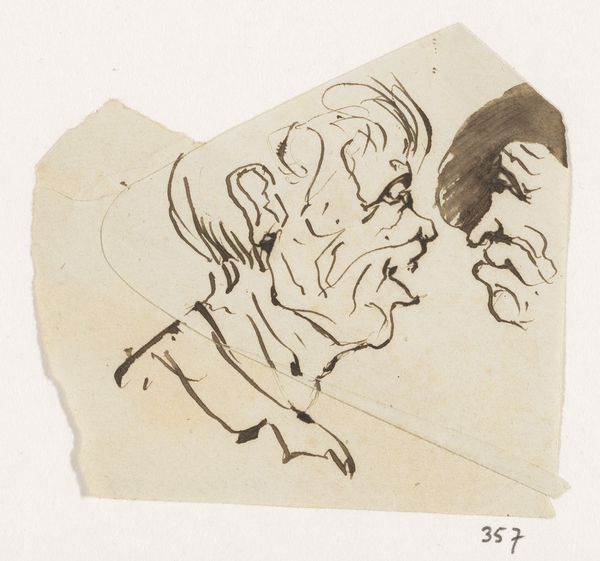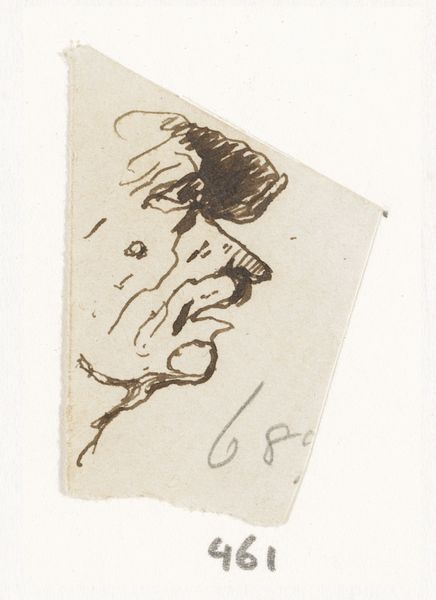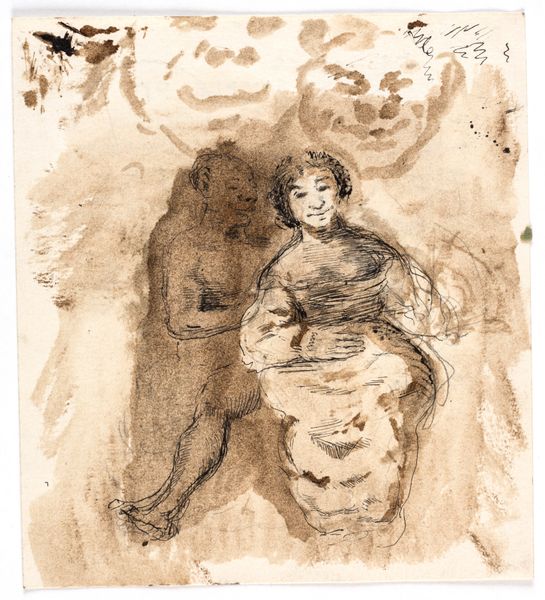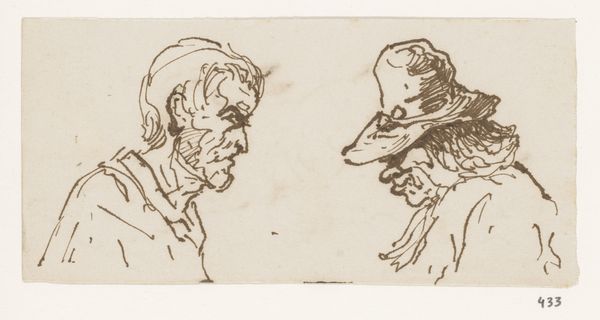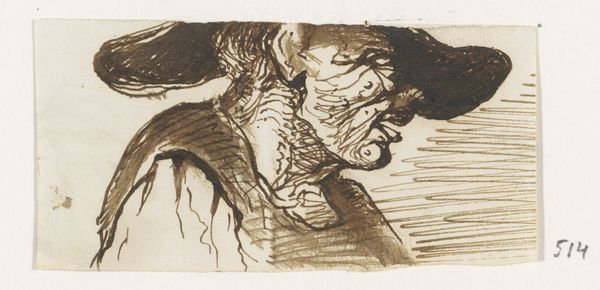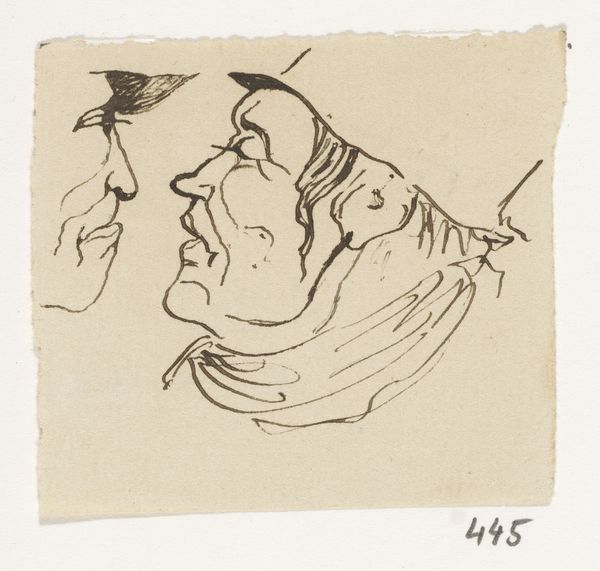
#
imaginative character sketch
#
quirky sketch
#
pen sketch
#
cartoon sketch
#
personal sketchbook
#
ink drawing experimentation
#
pen-ink sketch
#
sketchbook drawing
#
storyboard and sketchbook work
#
sketchbook art
Dimensions: height 103 mm, width 49 mm
Copyright: Rijks Museum: Open Domain
Curator: Well, this looks like an intriguing sketch. I find the hurried lines rather arresting, almost unsettling. What’s your initial reaction? Editor: It strikes me as whimsical, almost humorous, though with an underlying sense of the grotesque. The distortions in the faces are quite pronounced. Curator: Indeed. This is a piece called “Koppen,” dating back to 1869, crafted by Johannes Tavenraat, residing here at the Rijksmuseum. Editor: Tavenraat, interesting. The ink strokes build these caricatures of heads; their relationship to one another is unclear yet intimate. I observe a fascinating dance of positive and negative space that emphasizes the absurd dimensions. Do you get the impression they might be whispering something conspiratorial? Curator: The term "Koppen" implies the very act of depicting ‘heads’ as the theme here. Tavenraat exercises an approach focusing almost solely on outlines, thus revealing the foundation of structure, reducing all superfluous details into pure line drawing. It offers much of what any traditional portraits do, if we consider portraits an almost geometric translation. Editor: Given the historical context, this form feels very much in line with the political cartoons and social satires becoming more prevalent. The deliberate exaggeration of facial features reflects the social environment; consider the Dutch landscape and culture in that era—rigid, Calvinistic perhaps? Could these distorted faces be hinting toward subversive commentary on those established norms? Curator: Possibly, yet from an aesthetic perspective, this image allows us to contemplate the artist's ability to communicate essential elements using minimum apparatus. This concentration encourages pure seeing without burdening on narration itself but opening space where narrative emerges beyond what is merely seen from that era's conditions alone. Editor: Your perspective enriches it, of course. Considering the piece within broader culture shows a potent and sometimes critical form shaping or reshaped by its society that echoes how we, within present societies can be simultaneously moulded by it all! A compact study in observation versus reception! Curator: Absolutely. And looking deeper at visual form opens portals to how we connect to ideas visually across any medium. It challenges all rigid norms for observation alone and brings forth new possibilities.
Comments
No comments
Be the first to comment and join the conversation on the ultimate creative platform.
